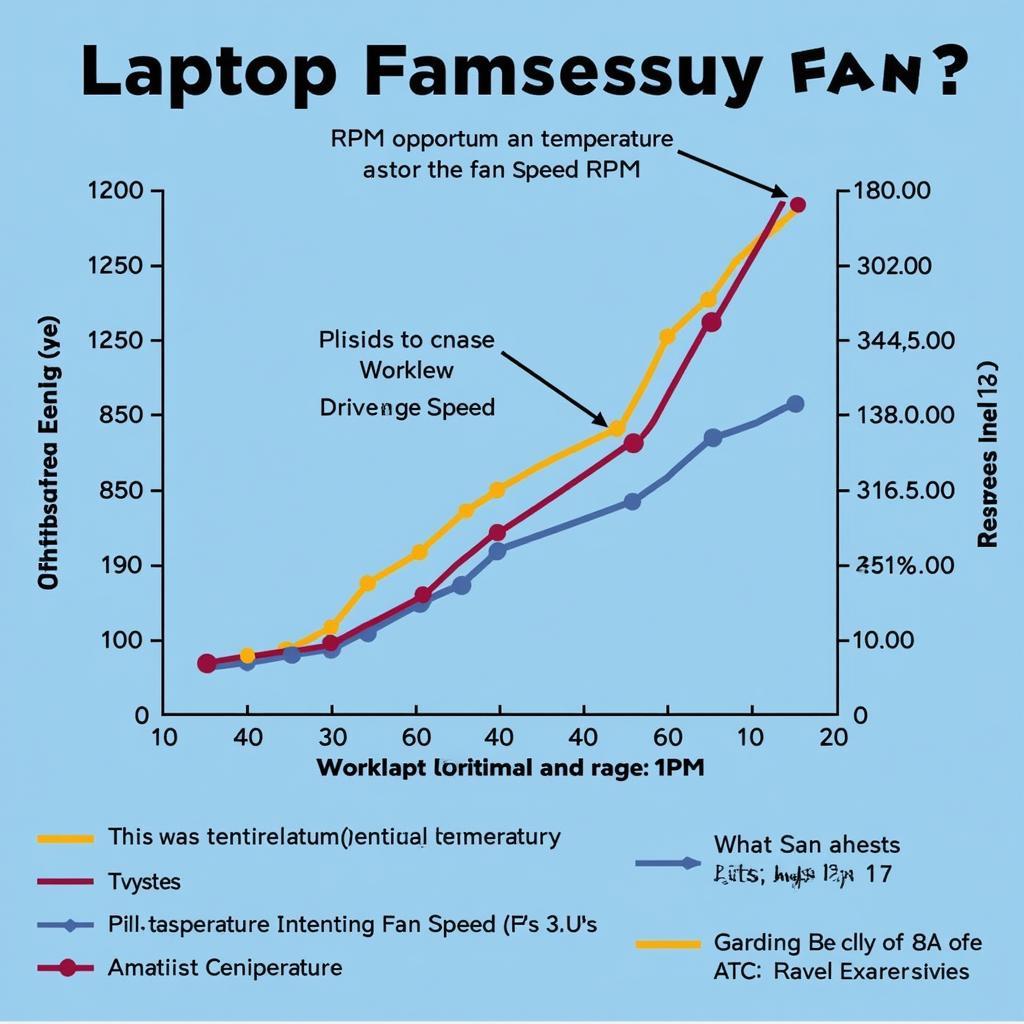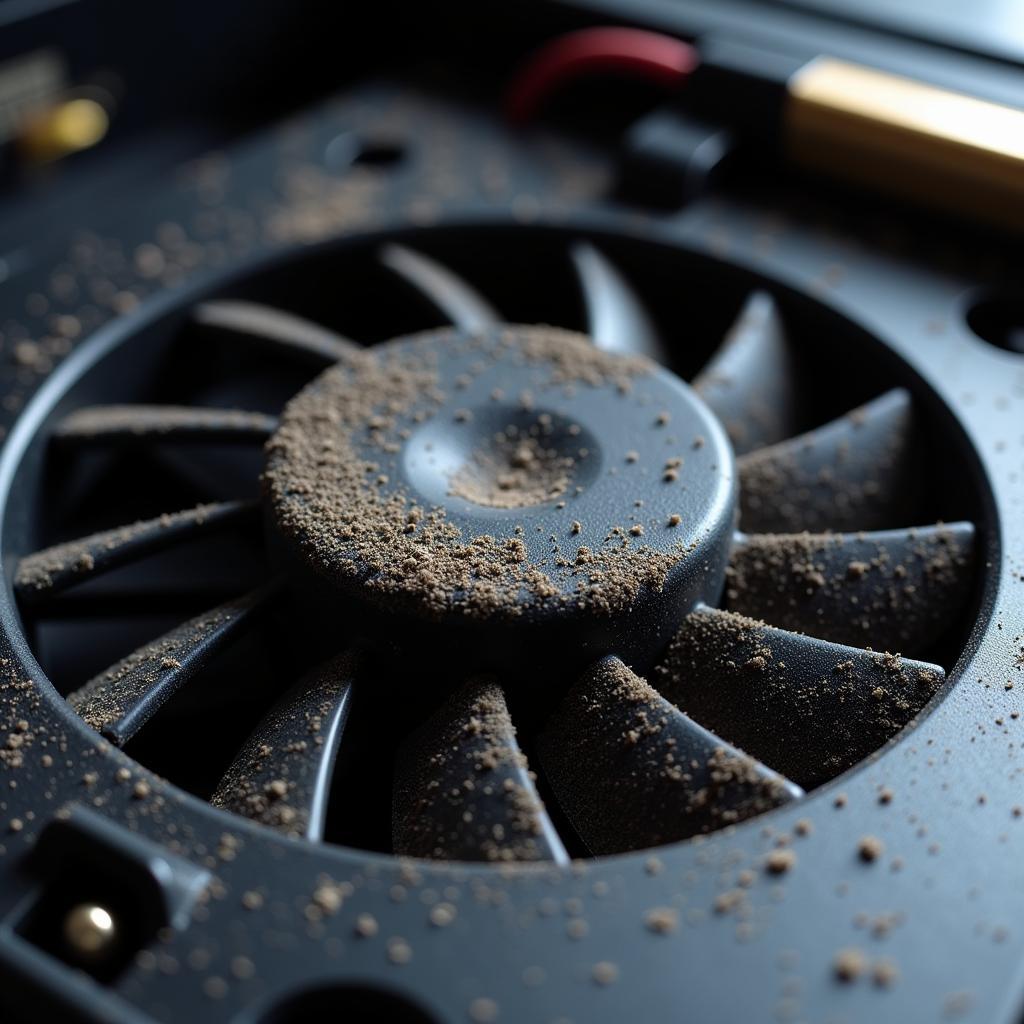When it comes to laptop performance, a balanced and efficient cooling system is crucial. The speed of your laptop fan is a key indicator of how effectively your system is dissipating heat and maintaining optimal operating temperatures. But how fast should a laptop fan actually run? The answer, unfortunately, isn’t a simple one-size-fits-all.
 Laptop Fan Speed Chart
Laptop Fan Speed Chart
Factors Influencing Laptop Fan Speed
Several factors influence how fast your laptop fan should spin, including:
-
CPU Temperature: This is the primary driver of fan speed. As your CPU works harder, it generates more heat. The fan will spin faster to draw in more cool air and expel hot air, preventing overheating.
-
Workload Intensity: Demanding tasks like gaming, video editing, or running multiple applications simultaneously put a heavier load on the CPU, leading to increased fan speed.
-
Ambient Temperature: If you’re using your laptop in a hot environment, the fan will naturally need to work harder to compensate for the reduced temperature differential between the internal components and the surrounding air.
-
Dust Accumulation: Dust buildup inside your laptop, particularly on the fan blades and heatsink, can obstruct airflow and force the fan to work harder, leading to increased noise and potential performance issues.
 Laptop Fan Cleaning
Laptop Fan Cleaning
Understanding Fan Speed Ranges
Laptop fan speeds are typically measured in revolutions per minute (RPM). While specific RPM ranges vary between laptop models, a general guideline is:
-
Idle (0-2000 RPM): When your laptop is idle or performing light tasks, the fan may spin slowly or even remain off, indicating minimal heat generation.
-
Light Load (2000-4000 RPM): As you start using more demanding applications, the fan speed gradually increases to maintain a safe operating temperature.
-
Heavy Load (4000+ RPM): During intensive tasks, the fan will spin at higher speeds to dissipate the significant heat generated by the CPU and other components.
Recognizing Abnormal Fan Behavior
While some fan noise is normal, especially under heavy load, persistent and excessively loud fan noise can indicate underlying problems. Here are some red flags to watch out for:
-
Constantly High Fan Speed: If your laptop fan is always running at high speed, even during idle periods, it could signify overheating issues, driver conflicts, or a failing fan.
-
Loud Grinding or Whining Noises: Unusual noises from the fan are often indicative of mechanical problems, such as worn-out bearings or obstructions.
-
Sudden Fan Stoppage: A sudden cessation of fan noise, especially when the laptop is hot, could signal a critical fan failure, requiring immediate attention to prevent damage.
Tips for Managing Laptop Fan Speed
-
Keep Your Laptop Cool: Use a laptop cooling pad, avoid using your laptop on soft surfaces like beds, and ensure adequate ventilation around the device.
-
Clean Your Laptop Regularly: Dust your laptop’s vents and consider opening it up (if comfortable) to clean the internal components, including the fan and heatsink.
-
Monitor CPU Temperature: Utilize system monitoring tools to keep track of your CPU temperature and identify potential overheating issues.
-
Adjust Power Settings: Optimize your power plan to balance performance and energy consumption, reducing unnecessary CPU load and, consequently, fan speed.
 Laptop Cooling Pad
Laptop Cooling Pad
When to Seek Professional Help
If you experience persistent fan issues, loud noises, or suspect a hardware problem, it’s essential to consult a qualified technician for diagnosis and repair. Attempting to fix complex hardware issues yourself could lead to further damage.
By understanding the factors influencing laptop fan speed and recognizing abnormal behavior, you can ensure your laptop operates within a safe temperature range, maximizing performance and prolonging its lifespan.


